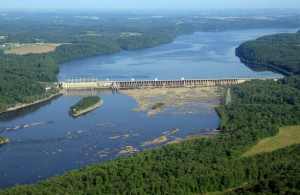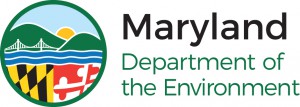Conowingo Dam Report Shows Time is Now for Collaboration, Innovation on Chesapeake Bay Cleanup
Conowingo Dam Report Shows Time is Now for Collaboration, Innovation on Chesapeake Bay Cleanup
Scouring Nutrients and Sediment May Affect Implementation of Bay Goals
March 10, 2016 — A newly finalized report on the Conowingo Dam underscores the urgency of finding innovative multi-state solutions to reduce the water pollution that threatens the Chesapeake Bay. The Lower Susquehanna River Watershed Assessment Study ─ conducted by the U.S. Army Corps of Engineers in coordination with the state of Maryland ─ confirms that the Conowingo Dam reservoir and two dam reservoirs further upstream have essentially reached their capacity and are no longer capable of trapping sediment and associated nutrients over the long term.
The assessment also found that the sediment and nutrients swept over the dams during large storm events are among the pollution sources that should be addressed to protect water quality and aquatic life in the Chesapeake Bay. Another major finding is that nutrients that enter the river upstream of the dams – from Pennsylvania and New York – and attach to sediment particles before flowing downstream into the bay have a larger impact on water quality than sediment itself.
“Maryland stands ready to work in collaboration with our upstream neighbors and federal partners to fix the shared sediments and associated nutrients problem,” Maryland Environment Secretary Ben Grumbles said. “We must all embrace innovative and cost-effective solutions to ensure the cleanup of the Chesapeake Bay and reduce the Conowingo’s impact on meeting our water quality standards in all bay segments.”
Modeling analysis shows that while sediments generally settle out of the water column within days or weeks, nutrients attached to the sediment can fuel algal growth and contribute to lower dissolved oxygen levels affecting water quality and underwater ecosystems. As a result, even with full implementation of Maryland’s federally-required bay cleanup plan, it will not be enough to achieve water quality standards in the three upper and mid-bay segments without strong actions from upstream states between 2017 and 2025.
The Environmental Protection Agency has established water pollution limits, the Chesapeake Bay Total Maximum Daily Load, which must be met by 2025 by Maryland and other bay watershed states. The EPA has said it would consider increasing its expectations for states’ progress in bay cleanup efforts if monitoring indicates that the Conowingo Dam’s capacity to trap sediment is reduced, as the newly finalized study shows. Maryland expects that the EPA will give new consideration to these findings since it was previously assumed that the Conowingo Dam would not lose its capacity for 15 to 30 years.
“We are grateful for the hard work and energy put into this report, but, action cannot end here,” Maryland Natural Resources Secretary Mark Belton said. “Maryland has worked hard to meet our Chesapeake Bay goals so it is critical that we acknowledge that the sediment and nutrients coming from these dams greatly impact our state’s waters. They may even prevent us from meeting our Chesapeake Bay goals. We are therefore committed to working hand in hand with our state and federal partners and Exelon to resolve this issue.”
The assessment also recommends that the state and partners carry out more Lower Susquehanna River monitoring and modeling to better measure medium to high flow event impacts on the bay. It also suggests that these results be used to inform the midpoint assessment. In an effort to be proactive, Maryland agencies, federal partners and Exelon heeded these suggestions from the early assessment and initiated a Lower Susquehanna River enhanced monitoring and modeling effort in 2015.
Maryland has been a leader in promoting viable management solutions like increased nutrient and sediment reduction practices, land conservation, dredging and beneficial reuse of dredged material, public-private partnerships, and market-based interstate water quality trading.
###
Environment: Jay Apperson, 410-537-3003, jay.apperson@maryland.gov
Natural Resources: Karis King, 410-260-8001, karis.king@maryland.gov



